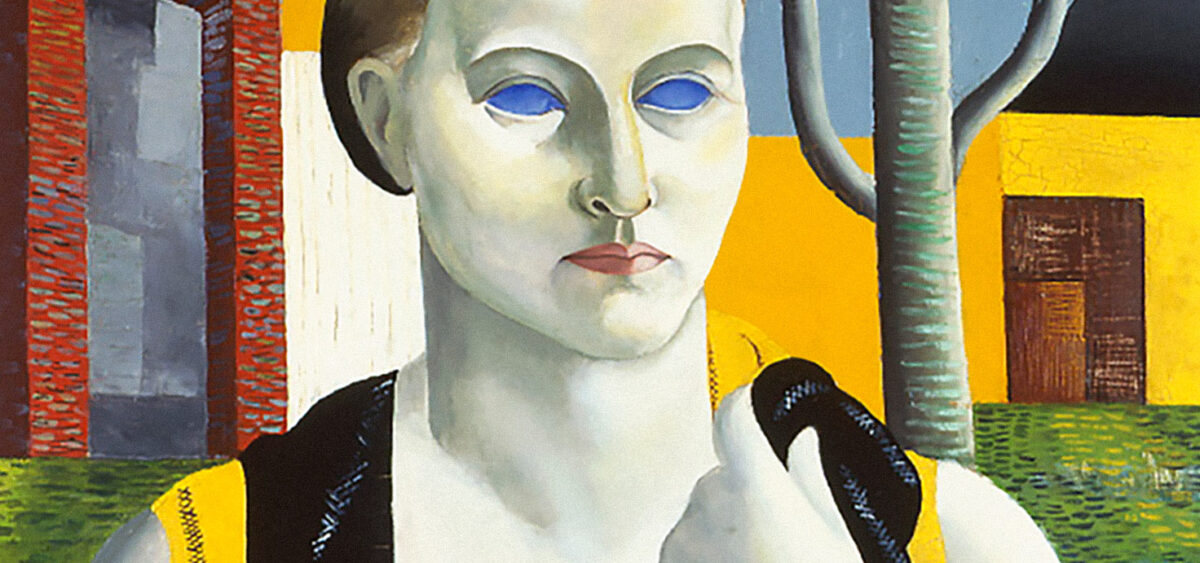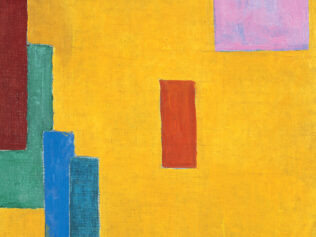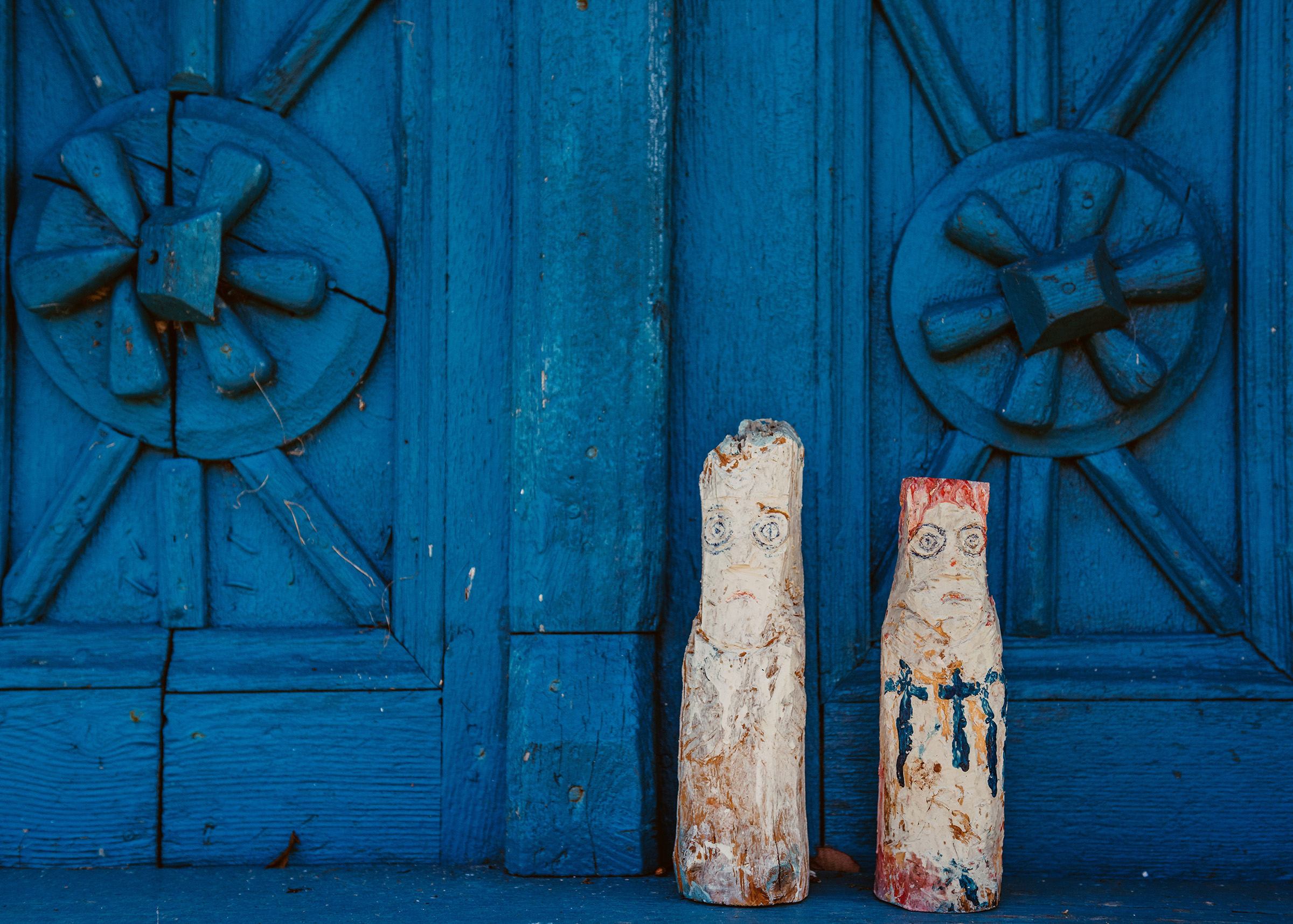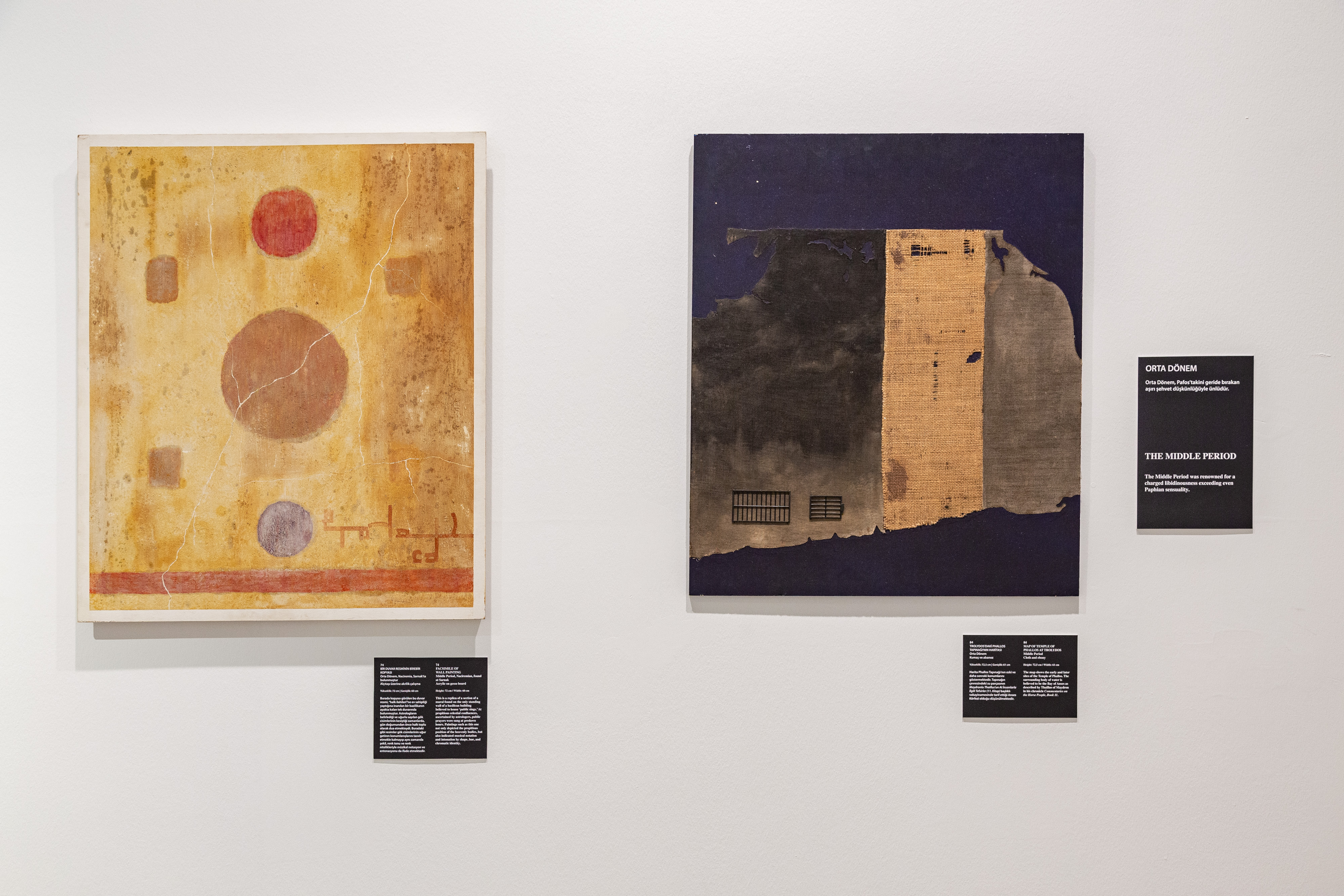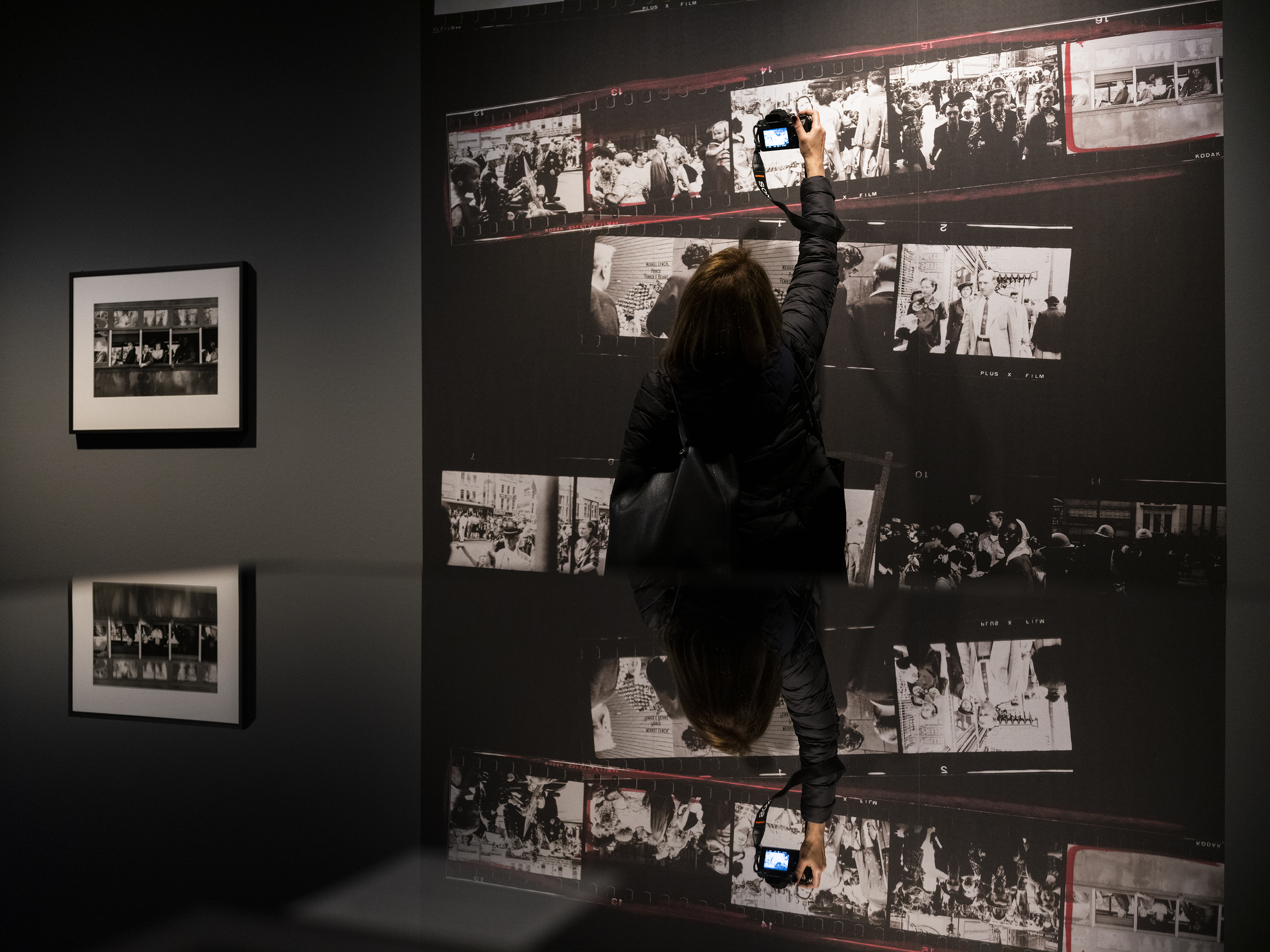
Just like many important and now forgotten Polish artists who were active in the first half of the 20th century, the heroine of today’s choice came from Podolia.
Maria Ewa Łunkiewicz-Rogoyska – shortened to M.Ewa or simply Mewa, as she was known – was born on 5th April 1895 in a village of just over 400 residents, called Kudryńce (modern-day Kudryntsi in Ukraine) on the Zbruch River in the Kamieniec Podolski (Kamianets-Podilskyi) district. The village was owned by the Kozbiebrodzki family and leased by the artist’s father, Stanisław Chmielowski who, just like his elder brother Adam, was educated in the Polytechnic Institute of Agriculture and Forestry in Nowa Aleksandria, as the town of Puławy was called at the time. Adam Chmielowski, you may be right in thinking, was the famous Catholic Saint, Brother Albert, who lost his leg during the January Uprising, became a painter, and finally, in the 1890s, dropped the art and founded the Albertine Brothers and the Albertine Sisters (Servants and Sister Servants of the Poor) in Kraków, where he worked to help the poor and lonely. Mewa’s mother – Maria née Kłopotowska – was also a painter. She studied art in an unknown workshop in Paris, as well as on Adam Baraniecki’s courses in Kraków. No wonder that Mewa’s family home was filled with paintings, not only by her mother and uncle Adam, but also by the family friend Stanisław Witkiewicz, who in 1911 gifted several mountain landscapes to the Chmielowskis. Much later, in 1937, the painter’s son, Witkacy, painted her portrait and even dedicated two of his books to her: Aesthetic Sketches (1922) and Introduction to the Theory of Pure Form in the Theatre (1923). Mewa had two elder brothers, Teodor and Adam, and one younger, Tadeusz.
From 1906 she studied at a school run by Sisters of the Sacred Heart in Zbylitowska Góra near Tarnów. In the school year 1911-1912, she ended up in a school run by the same congregation in San Remo in Italy, where – according to the documents – “she perfected her French”. She gained her school-leaving certificate from the Ursulines Secondary School in Tarnów in 1913 with a ‘commendable’ result, which qualified her to “study at university level as an auditor”. Soon after, World War I broke out and Mewa’s mother, upon her husband’s death, decided to move the family to Lwów (modern-day Lviv in Ukraine), where she bought a house. In that period, the future painter, following the family tradition, studied drawing at local courses for women.
Among Parisian artists
On 10th September 1919 in Lwów, Mewa married the artillery major Jerzy Łunkiewicz, her favourite brother Teodor’s close friend from the army. In April of the following year, the newly-wedded couple moved to Warsaw. But already in August, Mewa’s husband was sent to the front as the commander of an artillery unit. In contrast to her brother Teodor, he survived, and in 1921 they both went to Paris, where Jerzy Łunkiewicz – seemingly in recognition of his wartime service – was to study at the École supérieure de guerre. Mewa, on the other hand, passed the competitive exam to the École nationale supérieure des Arts Décoratifs, where she studied easel painting and functional graphics.
Perhaps it was then, as some experts suggest, that she met Henryk Stażewski, who visited Paris several times in the years 1924–1929. Just don’t think, dear readers, that it was an ordinary affair. If anything, it was a purely intellectual affair, as Stażewski was not interested in sexual relationships at all. One way or another, he introduced Mewa to the then artistic elite of Paris. She met artists such as Piet Mondrian, Michel Seuphor, Georges Vantongerloo, Fernand Léger, as well as some Poles, for example Aleksander Rafałowski and poet Jan Brzękowski. Most importantly, Mewa got to know the theory and practice of Purism, an art movement started by Amédée Ozenfant and Charles-Édouard Jeanneret-Gris (commonly known as Le Corbusier).
These artists postulated that the impressions we get when looking at a painting should be “close in their quality to psychic states aroused in us by the awareness of some common law, some common rule, as, for example, in mathematics.” Soon Mewa started painting like that. Her brush produced harmonious, static compositions made of simplified forms inserted into geometric figures in the background, with which they blended. The pictures were dominated by cold colours: blues, greys, white and cold shades of yellow. Mewa was the only painter of this style in the Polish artistic world. Unfortunately, the vast majority of her paintings from this period were destroyed during World War II.
Cityscapes
At the beginning of the 1930s, Mewa came back to Warsaw, even though she still often visited Paris. At first, she lived with her husband on the Officers’ Żoliborz estate and then, after they separated in 1932, at 89 Krakowskie Przedmieście. At the turn of January and February 1931 she had a solo exhibition at the Czesław Garliński Art Salon at 8 Mazowiecka Street in Warsaw. She showed 31 paintings, and the cover of the catalogue was designed by Henryk Stażewski himself. In May 1934, Mewa officially divorced Łunkiewicz. Nonetheless, she kept her husband’s name and still signed her works with it. The marriage left her with a bad taste and dislike for men in uniforms. She infected Stażewski with it, which he expressed in his notes. Soon after, Mewa and Henryk moved in together and lived for some time at 6 Ossoliński Street.
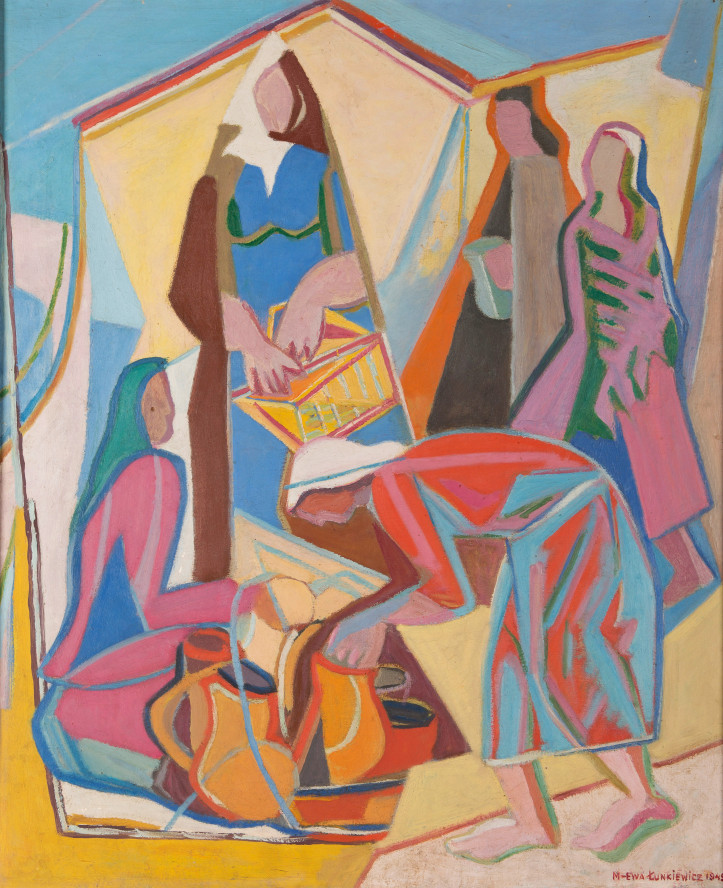
From the mid-1930s, new motifs started appearing in Mewa’s art. Now she painted humans in urban landscapes, portraits, sportsmen – footballers and swimmers – as well as horses. She took part in numerous collective exhibitions in Poland, mainly in the Institute of Art Propaganda in Warsaw, and abroad, for example in Paris, Brussels, Amsterdam, Budapest and New York. She also exhibited at art fairs in the Europejski Hotel, as well as in the Rotunda Lardellego patisserie at 30 Polna Street. Even before that, in 1933, she got involved with the unions: she was one of the founding members of the Union of the Polish Artists (ZZPAP) in Warsaw and for several years served as the board secretary. In September 1939 – as her nephew Stanisław, son of Adam Chmielowski recollected – she painted watercolours of the still smoking ruins of Warsaw.
In spring 1942, Mewa went on a cruise down the Vistula River and the San River to Siennów, where Zdzisław Wolski, her brother Adam’s brother-in-law, ran a farm. She took a substantial part of her pre-war paintings with her, rolled, and thanks to that at least some of her hitherto output survived. Travelling by waterways was probably considerably safe, as it meant avoiding searches and round-ups. She stayed in Siennów until autumn of the same year and then she moved to a cottage belonging to Monika and Edward Piwowarski near Miechów. She returned to Warsaw in 1945 and moved into a property at 11a Piękna Street, then still called Pius XI Street. Of course, she shared the flat with Henryk Stażewski, who had spent the occupation period in Szczekociny and now, when the war was over, had returned to the ruined capital. They both started working for the Military Geographical Institute, where they drew and described the topography of buildings and places in post-war Warsaw.
Perfect harmony
In 1946, Mewa got married again. This time to an engineer a few years her junior, Jan Zbigniew Rogoyski. The married couple moved in – alongside Stażewski of course (!) – to the premises on Piękna Street. Just like before the war, Mewa’s and Henryk’s home was a meeting place for old and new friends. Among those visiting were, for example, literary critic Adam Mauersberger and his sister Zofia Gawlikowska (a former Warsaw Uprising liaison), painter Nusia Piwowarska, Artur Sandauer and his wife, poet Miron Białoszewski and his friend Le, young art critics Anka Ptaszkowska and Mariusz Tchorek, painter Jerzy Tchórzewski, and long-term director of the Warsaw zoo Jan Żabiński (the same one who was played by Johan Heldenbergh in the 2017 film The Zookeeper’s Wife, directed by Niki Caro. Żabiński’s wife, Antonina – whose diaries were the basis for the film script – was played by Jessica Chastain. If you haven’t seen it yet, I recommend it).
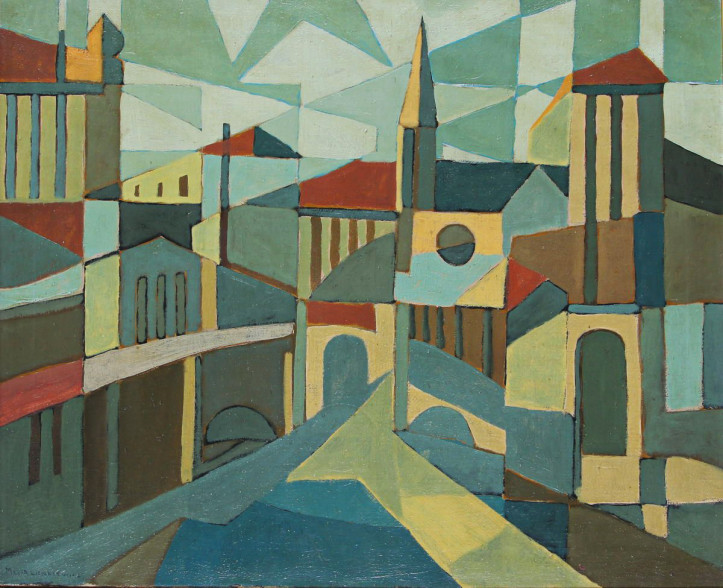
Nobody described this eccentric trio better than Miron Białoszewski in his book Donosy rzeczywistości: “Mewa ran around with Henio. But she had a husband, Jasio. The three of them lived together. Yet Henio’s room was always more separate. Mewa explained it to me, ‘Żabiński divides people into couples and boars. In couples, there is always a type A and a type B. Type A usually dominates in terms of energy, is a leader.’ And she was an A. While Henio was a typical boar. Mewa, Henio and Jasio lived, it seemed, in perfect harmony. When playing solitaire, they added cards for each other. When Henio was ill, Jasio gave him injections. And when they were conjuring spirits with a saucer, it was not the ghosts of some historical characters but… their own. Jasio had his fish and his plants, but when times were hard he supported all of them from his engineer’s wages. Jasio would leave for work, and then, at midday, Mewa and Henio would take their seats at the SARP café at 2 Foksal Street, always at the same table.”
“France was Mewa’s biggest love,” Anka Ptaszkowska recollects. “She read all available French press and literature and translated more interesting texts for us. I remember the taste of her omelettes à la Mère Poulard.” When Eric Veaux, the young French translator of Białoszewski, Tadeusz Borowski and Witkacy (and coincidentally also the translator of mine and Darek Foks’s book Co robi łączniczka), appeared in Warsaw, Mewa immediately felt such affinity that she named her favourite umbrella after him.
Need to be seen
In 1958, a new period in Mewa’s art started. From then on until the end of her life, she only painted abstract paintings. This is what Aleksandra Gończyńska said about them: “You might describe Maria Łunkiewicz’s last works with musical terms. The language used to discuss painterly form, if it remains within the tradition of art historical phrasing, seems to be too severe and dry, and most importantly doesn’t allow for capturing of their emotional, sensual essence. If we say that the internal relation of forms and colours is achieved in Maria Łunkiewicz’s pictures, it, in the case of most people, won’t create an impression of anything but order and structure, just like an average person won’t hear a symphony in their head while carefully reading its score. Those compositions need to be seen.” Mewa herself said about her new paintings that they were “op-art, supposed to tease the conjunctiva, so what I do is make them tease the conjunctiva and add some intellectual concept to it.”
In 1962, Mewa, her husband Jasio and Henryk Stażewski got a new apartment at the very top of the building at 64 Świerczewskiego Street (nowadays 64 Solidarności Avenue), apt. 118. Today the same apartment, suitably adapted by adding a glass pavilion on the roof of the high-rise, is the location of the Avant-Garde Institute, where visitors can see the untouched memorabilia of the previous residents. Not so much Mewa’s, but mainly Edward Krasiński’s, who moved in there – according to Mewa’s wishes – after her death in 1967, lived there for years with Henryk Stażewski and also after his death in 1988, up until his own death in 2004.
Maria Ewa Łunkiewicz-Rogoyska died on 4th September 1967, only several weeks after Jasio. As Miron Białoszewski’s friend Le remarked astutely: “So Henio is a half-widower now.” They were both buried at the Powązki Cemetery in Warsaw, their tomb designed, naturally, by their devoted friend Henryk Stażewski. Please, visit this grave on a November evening to pay your tribute to those truly exceptional people. You might also be stricken by a thought that one can live a beautiful life even in the hardest of times.
Translated from the Polish by Anna Błasiak


